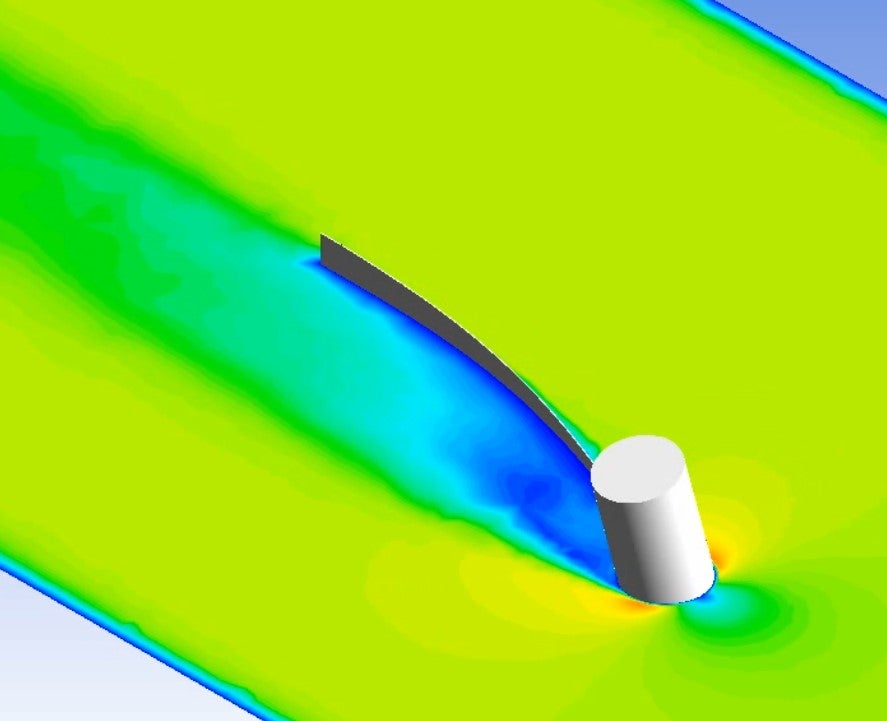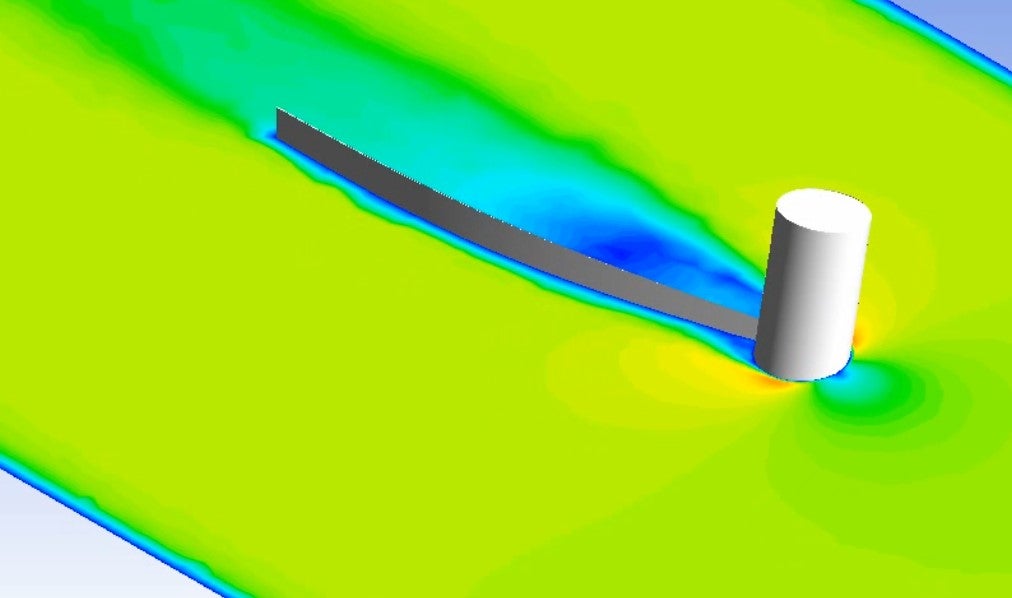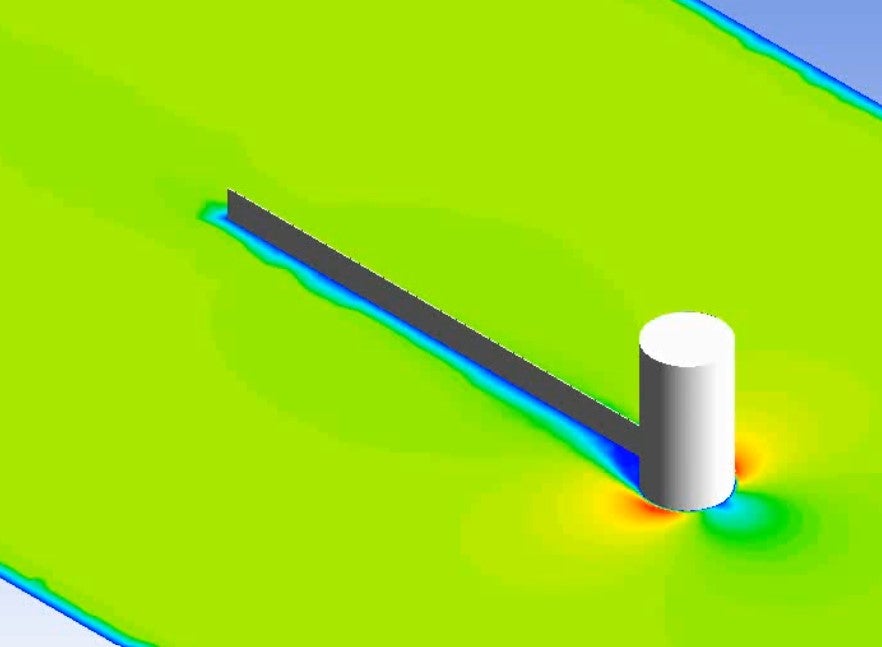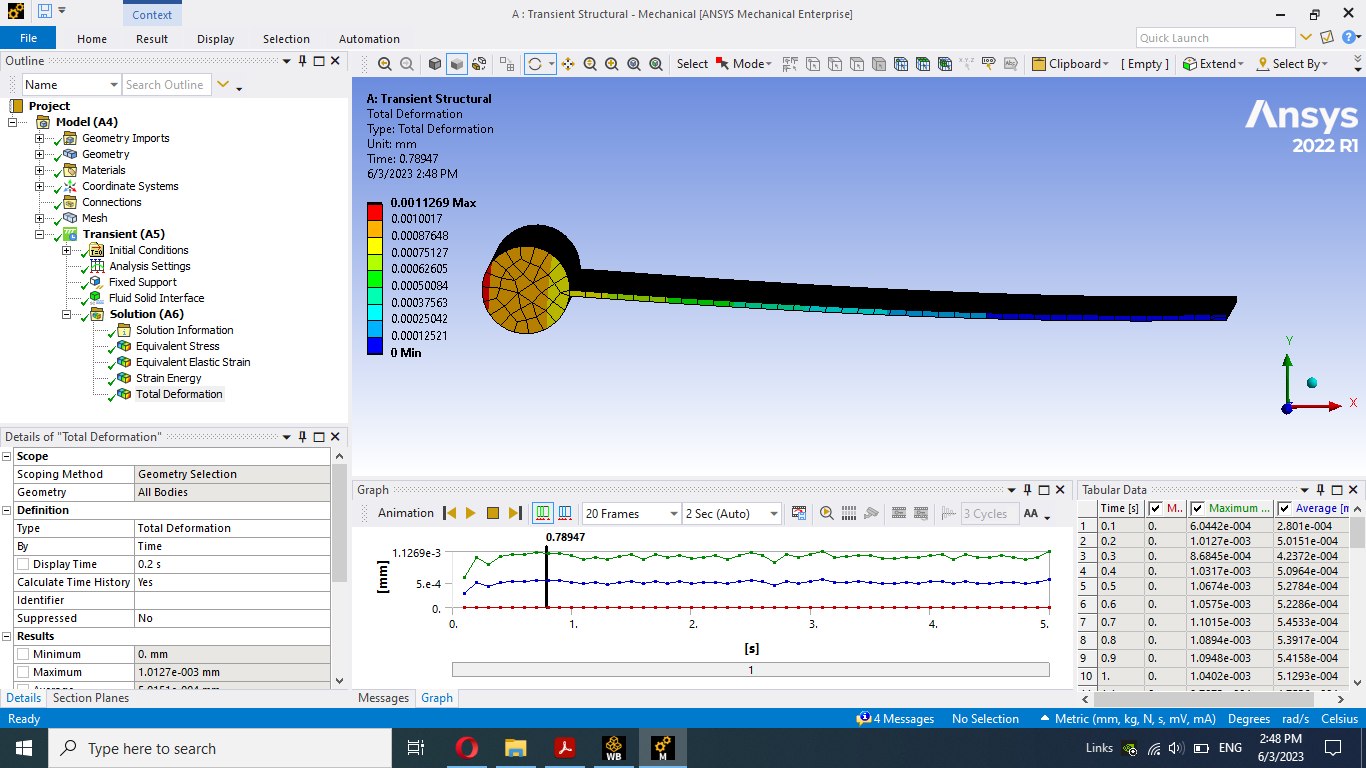TAGGED: 2-way-coupled-fsi, 2-way-fsi, fluent, fsi-2-way, transient-structural
-
-
May 13, 2023 at 11:41 am
EngGhost
Subscriberhello,
i'm trying to simulate the vortex induced vibration through fluid structure interaction, using Fluent and Transient mechanical,
the vibrating object is an Aluminum cylinder(32 mm diameter & 118 mm hight) connected to a thin Aluminum plate (200×25×0.5 mm) within a circular wind tunnel (400mm diameter), where air is flowing with a speed of 2 m/s.
1. the simulation gone great and the object is vibrating correctly, where both the cylinder and the plate are imported to mechanical APDL as one part made of Aluminum,
2. but when i tried to change the material of the cylinder to another material (foam), and the object is imported to APDL as two boddies connected by BONDED connection, the body did not vibrate at all,
3. I suspect the Foam material defenition, so I ran the simulation as the cylinder is made of Aluminum again, but as a different part from the plate, but they are connected as BONDED, and the results were different from the 1st simulation, where the plate and the cylinder just shifted to one side and did not oscillate,
So I still think that the problem is in the Bonded Connection between the plate and the cylinder, but it seems to be correctly defined since the 3rd simulation did run and the object moved, but i don't know why it is different from the 1st simulation where both have the same boundary conditions and materials,
can you please suggest any modifications or using another connection type? though i think the bonded connection is the logical choice,
thanks in advance.


-
May 15, 2023 at 1:22 pm
Federico
Ansys EmployeeYou can try the No Separation contact definition, which is similar to the Bonded type, to check if this improves anything.
-
May 15, 2023 at 2:12 pm
EngGhost
SubscriberThanks a lot
Thanks Federico for your reply, I'm gonna try it and give you the feed back
-
May 15, 2023 at 2:56 pm
Federico
Ansys EmployeePlease share on this Forum how it goes, either way!
-
-
May 17, 2023 at 5:35 am
EngGhost
SubscriberWell, I've tried to use the no sepration contact, but I always got a message that the transient mechanical solver throw an error.
When I changed the contact to bonded, the error message disappeared, but the the cylinder only pushed to one side and didn't oscillate,
I've tried to form a new body in design modeler and add both the cylinder and the plate in one body (Not unite boolean) and the then the performance of the cylinder changed, it it started to oscillate but with a very small amplitude even after Refining the mesh, the maximum amplitude is only 2 mm where it is over 20 mm in experimental work.
I still doubt the contact settings because it totally change the performance, but I cannot find the problem yet.
-
June 3, 2023 at 9:04 am
-
June 3, 2023 at 9:13 am
EngGhost
SubscriberAnish,
If they are one material, try to unite them with boolean in design modeler,
If they are not as my case,..... I don't know yet, I'm still try and error.
-
June 3, 2023 at 9:15 am
Anish thapa
Subscriberi made them as single material. just wondering if there is any chances making separate would increase the amplitude.
-
June 3, 2023 at 9:21 am
EngGhost
SubscriberI made them 2 materials with bonded contact, but it doesn't vibrate correctly as the experiment
-
- The topic ‘vortex induced vibration FSI’ is closed to new replies.



-
4678
-
1565
-
1386
-
1242
-
1021

© 2025 Copyright ANSYS, Inc. All rights reserved.








